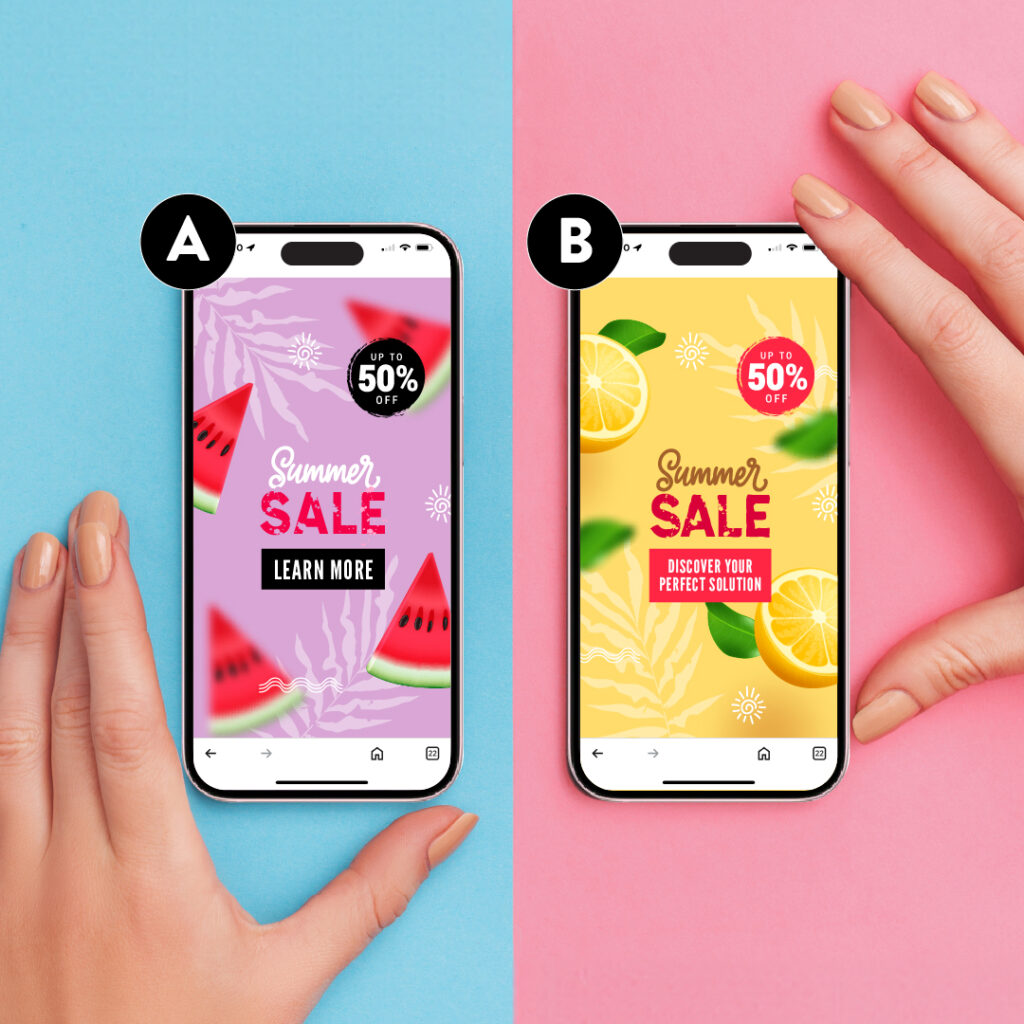A/B Testing: Unlocking Growth Through Marketing Optimization
3 Minute Read
This is only a test…..
Intro A: Imagine you’re running an online ad campaign. You craft what you believe is the perfect ad, only to see mediocre results. What went wrong? Without data, it’s hard to know. That’s where A/B testing comes in. This powerful optimization method allows you to compare two variations of your marketing strategies to identify what works best. Whether it’s ad design, website functionality, or bid strategies, A/B testing takes the guesswork out of marketing.
Intro B: You’ve probably heard the phrase “marketing is part art, part science.” But what if there was a way to lean more into the science? Enter A/B testing: a method that enables marketers to make informed decisions by comparing two versions of a marketing element. From boosting ad performance to refining website usability, A/B testing provides actionable insights that help you optimize your strategy and grow your business.
Examination: Which introduction resonated with you more: Intro A or Intro B? Did one make you more curious to dive into the blog? That’s the power of A/B testing – helping you understand what works best for your audience, so you can make informed decisions and achieve better results. Now, imagine applying that same principle to every aspect of your marketing.
What is A/B Testing?
At its core, A/B testing is a method of comparing two versions of a variable, such as the call-to-action in an ad, webpage content structure, or email headline, to determine which performs better. It’s a data-driven approach that helps you make smarter decisions by identifying what resonates most with your audience. For marketing professionals, A/B testing is an essential tool for maximizing ROI, minimizing risk, and creating more personalized customer experiences.
Start with a Clear Game Plan
A/B testing begins with setting clear objectives. What are you trying to achieve? For example, are you aiming to increase click-through rates (CTR) on ads or drive more conversions on a landing page? Clear goals provide the foundation for effective testing and help determine the metrics to evaluate success.
Once you have your objectives, it’s time to craft a hypothesis. This is where you predict how a specific change will impact results. For instance, you might hypothesize that changing the color of a call-to-action button from blue to orange will increase conversions. It is crucial to make small and isolated changes to test to not complicate the results with too many variations at play. With a solid hypothesis, you’re ready to design your test.
Rolling Out the Trial
Designing the test involves creating two variations of the element you’re testing. For ad copy, you might compare emotional messaging with informational messaging. On a website, you could test two different landing page layouts. For ad design, you might explore the effectiveness of isolated product images versus product-in-use visuals. For programmatic media, testing bid strategy settings helps maximize ROI for the strategy.
Executing the test requires careful planning and the right tools. It’s important to ensure accurate audience segmentation and consistent implementation – with the right tools and the expertise in using them, you get clean results that aren’t muddied with impacting factors like audience overlap across the testing scenarios, insignificant results due to sample size and performance deltas, or time-based factors that might be influencing performance.
Making Sense of the Results
Once the test concludes, analyzing the results becomes crucial. Metrics like cost-per-click (CPC), CTR, and conversion rates help determine which variation performed better. For example, a test comparing isolated product images versus product-in-use visuals might reveal that the latter increased CTR by 20%.
A/B testing doesn’t stop with analysis. The insights gained inform future strategies, allowing you to iterate and scale successful elements. For instance, if a particular ad copy variation outperforms others, it can be scaled across multiple campaigns to maximize impact. Additionally, different elements of the specific marketing execution can then be tested to further increase performance. Having a thoughtful A/B testing cycle that considers the uniqueness of marketing channels, strategies, and tactics is crucial for optimization and driving business forward, effectively & efficiently.

